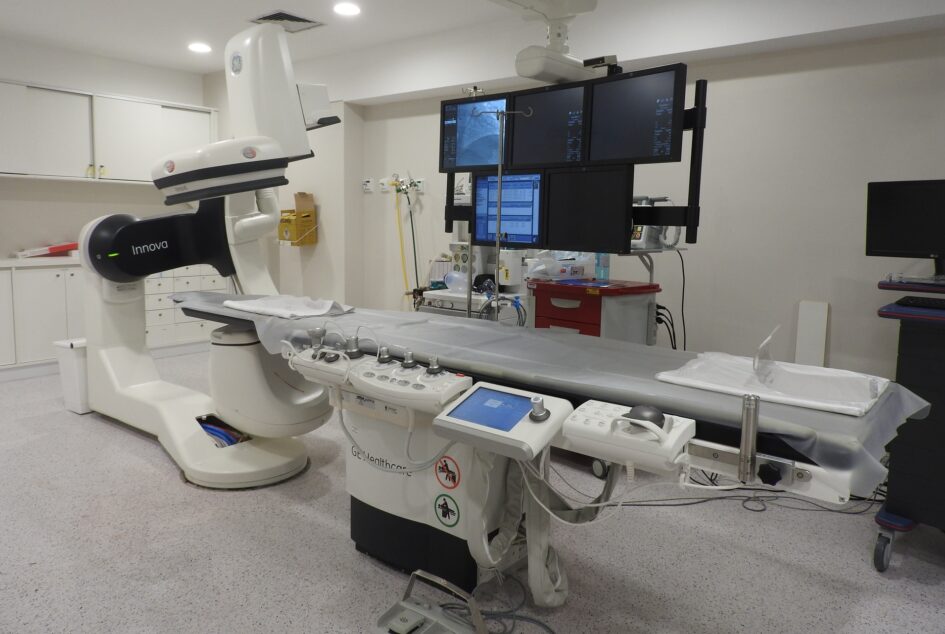The digital exchange of medical data saves lives. Because if all professionals involved in treatment can access relevant data simultaneously and process the data in real-time, patients benefit in multiple ways. Their safety increases significantly because human errors such as illegible handwriting or drug confusion become a thing of the past.
In addition, the accelerated digitalisation during the pandemic brought many advantages in terms of telemedicine or remote monitoring of vital parameters. For the ongoing digitalisation in healthcare, edge computing solutions are therefore an obvious choice. The three top reasons are
- Protecting all sensitive patient data in the best possible way
- Simultaneously processing data in real-time
- Speed of processing and fast response times
EU investments in digital infrastructure and underlying processes
In order to be better prepared for future pandemics and to optimise the healthcare system overall, the EU launched the EU4Health funding project in March 2021, providing a budget of around 5.3 billion euros until 2027. Among other things, the digital exchange of information and digitalisation in the healthcare sector will be promoted. Additionally, some member states have also launched their own national funding projects.
In Germany, for example, the Hospital Future Act (Krankenhauszukunftsgesetz) has provided a total of 4.3 billion euros for digitisation in hospitals since October 2020. The funds should be spent on information technology equipment, robotics systems, and telemedicine structures. Progress in this area is urgently needed because many countries, such as Great Britain or Estonia, are much further ahead. Germany ranks second to last ahead of Poland. (Source: Bertelsmann Stiftung: Studie zur Digitalen Gesundheit)
What a digital health network could do for us
Germany is still working on the basics of digital networking. Only since the beginning of this year, all medical centres had to connect their hospital information systems to the nationwide telematics infrastructure (TI), Germany’s data highway of its health care system. More importantly, all health insurance companies, medical practices, and pharmacies in Germany could theoretically exchange electronic patient records, issue electronic prescriptions or certificates of incapacity, and manage emergency data through this network. Patients could create their own files and share the data for further examination and discussion with medical experts.
In addition, the Research Data Center Health (Forschungsdatenzentrum Gesundheit) at the Federal Institute for Drugs and Medical Devices (Bundesinstitut für Arzneimittel und Medizinprodukte) is affiliated and could use available data for research purposes and make an important contribution to better health care for everyone.
When reality bites
In fact, the e-prescription in Germany was only introduced in the summer of 2021 in one single focus region and since December 2021 throughout the country but only on a test basis. According to the Federal Ministry of Health, the status quo hasn’t changed yet. However, doctors and therapists should be able to issue prescriptions for digital health treatments completely digitally via the health data network from 2023. During the pandemic, vaccination centres in Germany also used the health data network to arrange vaccination appointments and to determine vaccination rates. This didn’t work well at all unlike in all the other countries with more advanced digitalisation levels in the health sector. Just for comparison: Numerous research institutes and competence centres are already connected to the network of the UK National Health Services (NHS), and analogue working methods have been consistently digitised for quite some time. This is only one reason why the digital vaccination management in the UK ran smoothly. In addition, the NHS network is already being used for remote-controlled operations, for example.
Remote surgery with minimal latencies
Robotic surgery is minimally invasive and, when one-hundredth of a millimetre counts, far more precise than operating by hand. Robot arms are more flexible and precise because they never tremble. In addition, external specialists can operate remotely. They would use two ‘joysticks’ and see a three-dimensional, enlarged image of the surgical area with the robot accurately replicating the movements of the surgeons. The latency-free transmission of control commands and image data is crucial for these solutions.
Therefore, remote operations are one of many use cases that should be addressed with an edge computing solution because only the medical data required for the operation is sent over the network. The edge server of the surgical robot handles the fast processing of the sensor data from the joysticks. Since all data relevant to the operation is transmitted anonymously, important patient data protection is also guaranteed.
Fast data processing in intensive care
Intensive care units have to deal with a particularly high volume of data because numerous vital parameters of the patients have to be continuously monitored. If an edge server processes these parameters on-site and sends an alarm to the staff on duty in case of abnormal vital signs or limit value excess, this happens very quickly. Moreover, the data remains on-site. Meanwhile, there are even efforts to use continuously collected routine data to develop a ‘virtual patient model’. This model is intended to simulate different health conditions of intensive care patients, forecast their outcomes, and predict potential complications.
High data security standards for medical IoT management
More and more hospitals are managing their medical devices and inventory using a common management interface. For real-time localisation, all devices, products, and components receive either RFID or other radio tags or barcodes. The staff can thus quickly allocate and locate them. If the application is not installed in a cloud but on a server inside the hospital’s network, this increases data security. For example, the hospital administration can also integrate patient wristbands and staff ID cards into the system. If the edge server has secure access to the healthcare data network, it’s also possible to access a central medical product database directly.
AI-assisted diagnosis in imaging processes
In image-based diagnostic procedures, AI-supported decision-making procedures are en vogue. The software analyses a range of scans or images and automatically selects the most meaningful one, in which a certain anomaly or misalignment is most noticeable. This facilitates and accelerates diagnostics. For this purpose, the self-learning system uses a collection of already diagnosed and anonymised scans or x-ray images that are already integrated into the system. If the local system doesn’t have sufficient data to make a decision, it can access central online medical databases and search for comparable images with a confirmed diagnosis.
Individual therapies and health trackers via app
In addition to these server solutions, a rapidly growing edge computing model is currently developing in the medical segment and integrates mobile devices in treatment concepts. Today, hospitals and doctors’ offices can now prescribe apps on prescription. For diabetics, for example, there is an app that automatically evaluates the readings of a blood glucose meter or an insulin pen and transfers the data to a protected online diary. The treating physician can access this diary with the patient’s consent at any time to provide better advice. In addition, therapy-supporting apps and health trackers are becoming increasingly popular.
Medical edge computing thus also takes place on smartphones. However, powerful applications such as time-critical online operations or big data analyses require specially designed computing and storage capacities that are connected to a fast network with sufficient bandwidth.
What about Storage requirements in the e-health sector?
The requirements for storage systems are as diverse as the available applications. In the hospital sector, highly available storage is a must because any failures can be a matter of life and death. When users need quick access to unstructured data it is highly recommended to choose object-based and Simple Storage Service (S3) compatible storage systems.
One big advantage is to set system-defined and user-defined metadata. These unique identifiers help to significantly reduce search time. Even more importantly, Object Lock protects data from encryption in the event of a ransomware attack and thus also eliminates the need to pay a ransom. Object Lock makes data immutable so it can neither be deleted nor overwritten during a previously defined retention period. Even in case of a disaster, medical institutions can restore critical data fairly quickly from a ‘clean’ copy after a successful forensic investigation.
Does edge computing make sense in the healthcare sector at all?
To avoid overloading hospital and healthcare networks and to enable local systems to react without latency, an edge computing approach is ideal for many digital applications. When the data is selected, processed, and analysed on-site or at its source, only necessary data is sent over the network.
The use of edge computing in healthcare ensures faster, better, and more patient-friendly care. Thanks to telemedicine, people with reduced mobility no longer have to make their way to a medical institution. Relatives and nursing staff are alerted immediately in the event of an accident.
AI-powered analytics help the early detection of cancer, medical facilities benefit from more efficient asset management, and specialists can perform life-saving operations anytime and from any location with sufficient internet access and bandwidth. With or without robot support.
No doubt, medical and patient-related data are highly sensitive and therefore require the highest levels of protection. The closer sensitive data is to the edge, the less is the risk that unauthorised individuals can access the data from the outside.


